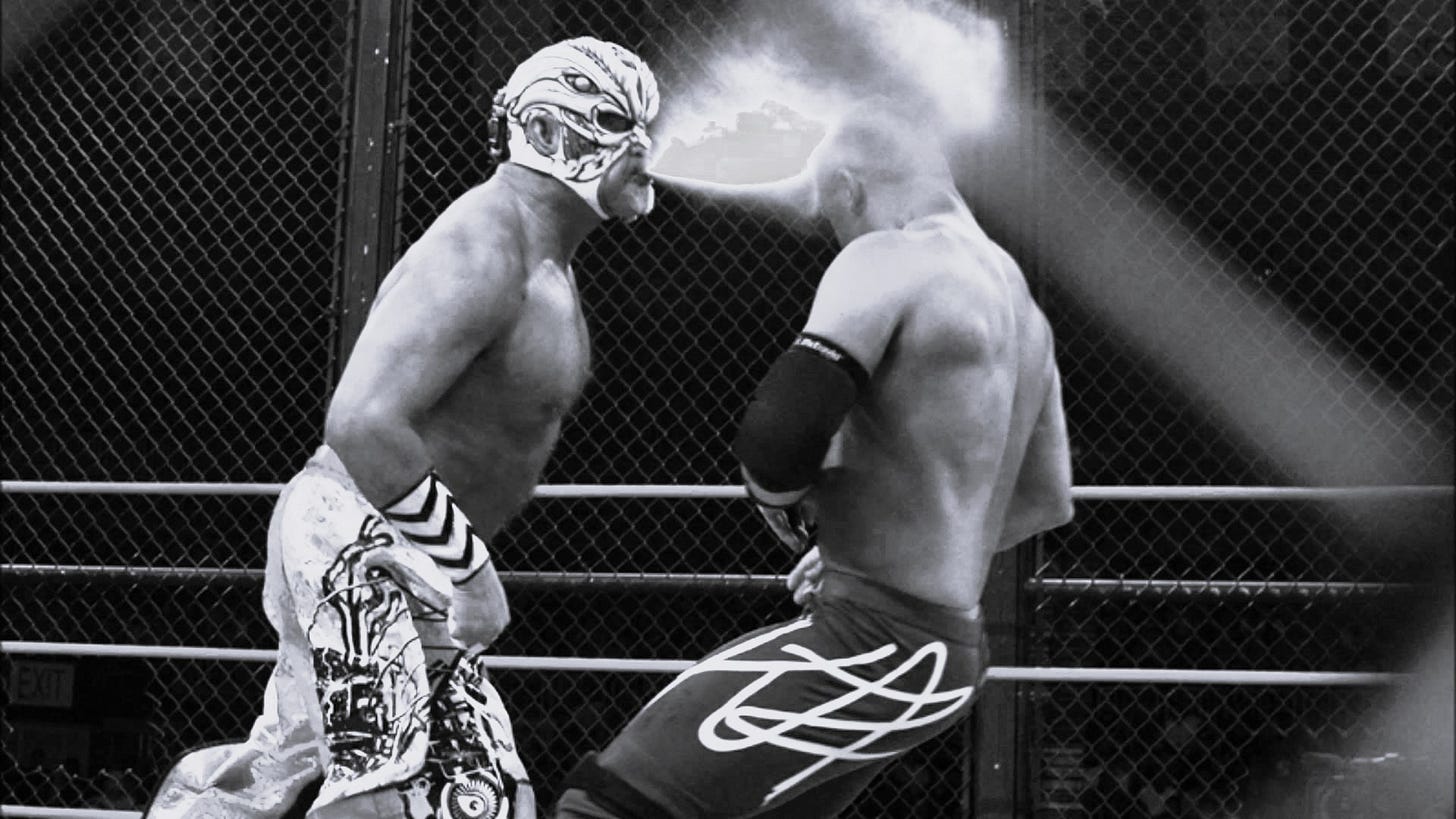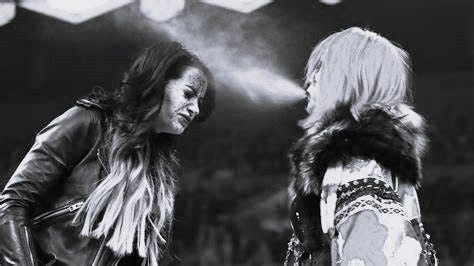On a recent episode of WWE’s “Monday Night Raw,” Asuka spat green mist in the eyes of the Judgement Day’s youngest member, Dominik Mysterio. Mysterio has, to his credit, committed to the bit, going so far as working “blind” behind a pair of absurd sunglasses. The attack was the second time in the last month that Asuka has used mist as a weapon. She took down Mysterio’s stablemate/love interest/leather-clad Mami Rhea Ripley with the same mystical green poison at Survivor Series: War Games. WWE is not the only major promotion in the mist game. Over in AEW, Malakai Black and Julia Hart of the House of Black have paralyzed opponents with their creepy brand of black bile.
In this edition of Hardway Wrestling, we attempt to answer a kayfabe question about this toxic “weapon” with decades of tradition in the wrestling business: What are the rules of mist? Let’s explore what we know.
Mist Rule One: It Helps to Be a Heel, But It’s Not Necessary
According to an excellent piece by Kenny Herzog that appeared in The Ringer a few years back, Gary Hart and the Great Kabuki pioneered the use of mist as a weapon in American wrestling. They claimed the mist was a physical manifestation of Kabuki’s hatred for the fans, his contempt for them made liquid. The idea that the ability to project a vile poison as a sign of inner evil has held for decades. Killer Khan, a 1980s WWF villain, also conjured the mist to torture opponents. Asuka did not (could not?) mist the competition until she turned heel and teamed with Kairi Sane to form the Kabuki Warriors. The House of Black, an evil faction implicitly aligned with the occult, terrorizes unsuspecting opponents with their black devil-mist.
There is one glaring exception to the “only heels mist” rule: the Great Muta. Muta spent most of his U.S. career as a babyface and was wildly popular with fans. His 2022 appearances in AEW and the excitement over his retirement tour, particularly his match against Shinsuke Nakamura, go to show Muta’s popularity has held. Asuka, too, provides an exception to the first rule. When she misted Mysterio and Ripley she was the hero, not the villain.
You could talk me into Asuka being a rare exception to the “only heels mist” rule, but not Muta. He’s been a serial mist-er for decades, even as a babyface. We can only conclude that while misting is primarily the purview of heels, a rare breed of faces can use it, too.
Mist Rule Two: The Power to Mist is Transferable to Those Open to It
Let’s examine the strange case of Julia Hart. After backing the Varsity Blondes as a cheerleader, Hart was misted by Malakai Black, an attack that sidelined her for weeks. When she returned, she did so under an eyepatch and with a new, dour bearing. She made her official move to the dark side at Double Or Nothing, appearing after the lights went out during a trios contest between Death Triangle and House of Black. She spat black mist in Pac’s face, costing Death Triangle the match. The transitive property is in play here. Black misted Hart, giving her the power to mist. It seems so clean and simple, only it isn’t.
If all it took for one to gain the power to mist was to be misted oneself, half the WWE women’s division would be spitting green poison by now, as would members of the Factory and everyone else victimized by the House of Black. Practically every match would include a mist spot. Thus, there must be more to it than that.
Let’s evoke the Great Kabuki and assume the supernatural ability to spew mist must be transferable only to those with at least a flicker of poison burning within them. In this way, the power is not so much given as accepted. Agreeing with this hypothesis means reading Julia Hart’s turn as a different, more nuanced story. Malakai Black didn’t assault the former cheerleader; he offered her the opportunity to blossom into who she wanted to be. Hart seized that opportunity, as violent as it was. She did not rebel against her true nature. She embraced it. Her behavior as a dark-hearted heel in recent months only makes this hypothesis all the more probable.
Mist Rule Three: Some Are More Susceptible To the Poison Than Others
No one in the history of wrestling is immune to a misting. Every performer who has taken one has at least fallen to the mat and writhed in pain and blindness. In most cases, a misting ends a match. Some superstars, like Mysterio, suffer long-term physical effects. Others, like Hart, are altered from the inside out. No one escapes unscathed, but scathing is a spectrum. No two mistings are exactly alike.
Persona, Predisposition, and Potency: The 3 P’s of Wrestling Mist
Let’s return to our original kayfabe question: What are the rules of mist? It turns out that, while the power to spit poison follows some predictable patterns, its rules are not hard and fast. They are more a set of conditions, three intersecting variables: persona, predisposition, and potency.
Mist is almost always a tactic deployed by the baddies. With a couple of noted exceptions, only those with a heel persona know the ways of the mist. The power to mist can be transferable if the recipient is predisposed to it, presumably by some character defect. Finally, mist varies in potency, even when the source of that mist is one person. In short, mist is a weapon bestowed upon few but feared by all
That closes the book on this kayfabe question. Whatever you celebrate, have a fantastic holiday. See you between the ropes.




